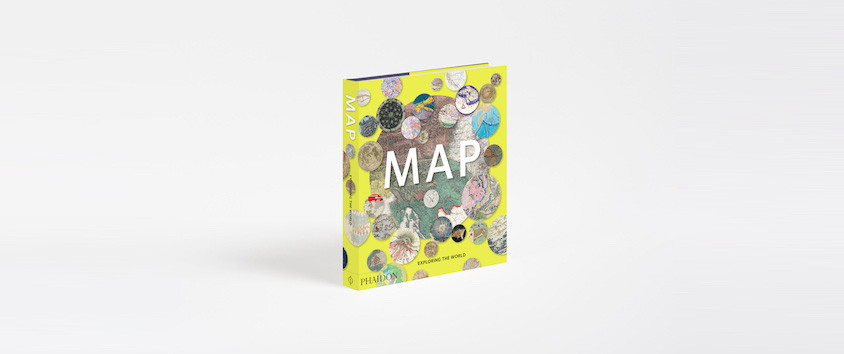
Featured in Map: Exploring the World, Estelle Hogan’s Baltaltjara (pictured) depicts a physical area near the artist’s place of birth, as well as a site of sacred significance, as Baltaltjara is also the place where the Seven Sisters made camp before eventually becoming the constellation that we know as the Pleiades. As such, this work can be seen as a type of map in both a physical and metaphysical sense.
by Phaidon Editors (Phaidon Press, $75)
From the earliest days of cartography to the digitally-generated maps produced today, this book showcases the myriad ways humans have tried to graphically represent our world (in whole or in part) over the past 5,000 years.
In producing this book, Phaidon Editors have compiled a cartographic collection that goes beyond the usual expectations for a volume on mapping, instead presenting an experience that is both highly accessible and engaging. As such, Map: Exploring the World is bound to be of interest for cartography enthusiasts and the uninitiated alike.
The book doesn’t set the kind of strict parameters for what might constitute a map either, including illustrations from contemporary artists and even fictitious maps such as the one found in Robert Louis Stevenson’s Treasure Island. Even AA Milne’s Winnie-the-Pooh gets a run with EH Shepard’s map of the Hundred Acre Wood.
For the more technologically-oriented, maps incorporating visualisations of data are also on show, revealing a glimpse into the next level of cartography that lies at the intersection of traditional mapping and modern concepts behind the ‘infographic’.
At 352 pages including 300 colour illustrations in a hardback cover measuring 305 x 238 mm, this is no pocket-size guide, but rather a coffee table book launched conveniently in time for Christmas. But that doesn’t mean it won’t be highly prized by anyone lucky enough to find it waiting for them under the tree this year.


